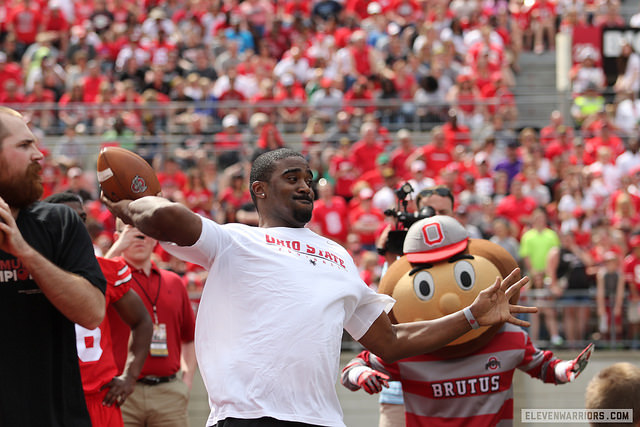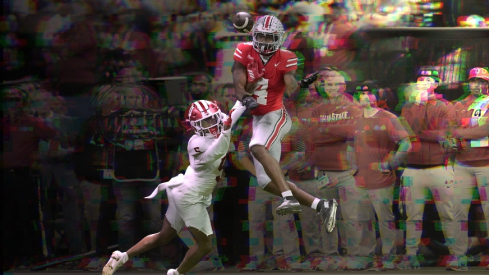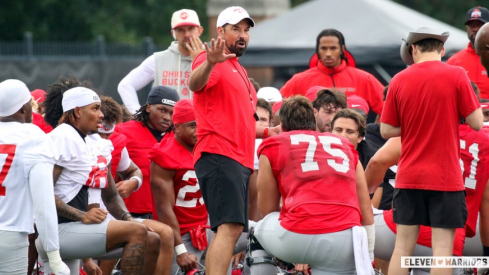January of 2001 was a tumultuous time in the world of Ohio State football. Fresh off a second-straight loss to Lloyd Carr and the Wolverines – this time in Columbus – the Buckeyes would fall to South Carolina on New Year's Day; managing a mere touchdown in the 24-7 Outback Bowl defeat. Those struggles would lead to the demise of John Cooper, who would be fired on Jan. 2 after 13 seasons in Columbus.
A few short weeks later, the Buckeyes had their man. After 15 years and four national titles at Youngstown State, Jim Tressel was introduced as Ohio State's new head football coach on Jan. 18.
The hiring of Tressel would go on to mean a lot of things for Ohio State and its fanbase. At the top of the list is certainly a major resurgence by the Buckeyes against their rivals to the north and the 2002 National Championship over the unbeatable Hurricanes.
The big news in Columbus would coincide with some major changes in the world of college football recruiting coverage. Back in the early 2000s, the recruiting scene was merely a shell of what it is today. If one were to peruse the Scout.com or Rivals.com databases right now, you would find that both sites – at least as far as the player profiles go – trace all the way back to one year: 2002.
Years before Twitter and Facebook – hell, even a year before Myspace got started – that was pretty much it when it came to following the antics of high school juniors and seniors on the internet. However, it was a colossal step toward what we have grown accustomed to today.
For Ohio State, 2002 would go on to signify Tressel's first full recruiting class in Columbus, and what a class it would prove to be.
Today, it's not that difficult to point out the headliners of that 2002 class. Fourteen years ago, it was impossible to predict how things would pan out as many of the class's more highly touted prospects would face some major turmoil during their stays in Columbus.
Per the Scout.com rankings, the class featured three five-star prospects, 13 four-stars, and eight with three stars or less. Three Ohioans – Mike D'Andrea (Avon Lake), Maurice Clarett (Warren Harding), and Mike Kudla (Sparta) – made up the class's national gems.
D'Andrea was labeled by many as the nation's top linebacker and was viewed as the next Spielman or Katzenmoyer for the Silver Bullets. After earning a spot in the two-deep during the Buckeyes' national title run, a series of knee injuries would ultimately cost the former five-star his playing career. At defensive end, Kudla started 19 games for Ohio State while recording 91 tackles and 14.5 sacks. He was named to the All-Big Ten team as a senior in 2005.
Clarett's Buckeye career has been well documented. The 2002 National Championship run simply doesn't happen without him. As a true freshman, the Warren G. Harding phenom totaled over 1,300 yards of total offense and found the end zone 18 times. Say what you will about what happened after the 2002 season, but it's hard to imagine we will see another freshman tailback like that again in the near future. Clarett also accounted for what was probably the most important play of the Fiesta Bowl.
The Buckeyes brought in a pair of four-star signal-callers in Cleveland's Troy Smith and Massillon's Justin Zwick. Smith, who for a long time was viewed as more of an athlete than a quarterback, would go to take home a Heisman Trophy as he made his mark in Buckeye lore. His career passing numbers would total 5,720 yards and 54 touchdowns. The one-time kick returner added another 14 scores with his legs. Zwick opened the 2004 season as the starter before ultimately taking a backseat to Smith.

While things may not have gone as planned for one linebacker in the 2002 class, two other in-state backers went on to live up to the hype and much more. Centerville's A.J. Hawk, a mere three-star in high school, went on to take home All-Big Ten honors three times. As a senior, he was the winner of the Lombardi Award and was a unanimous All-American before going on to be drafted fifth overall in the 2006 NFL Draft.
Bobby Carpenter twice earned second-team All-Big Ten Honors while at Ohio State. He was often utilized as a rush end during passing downs, recording 14.5 sacks during his tenure in Columbus. He would go on to be selected 18th overall by the Dallas Cowboys.
Another Ohioan, Centerville's Nick Mangold, actually had zero stars next to his name according to the Scout.com rankings; checking in as the nation's 291st-ranked offensive lineman. The Kettering Alter product would go on to be a three-year starter at center for the Scarlet and Gray. He was drafted 29th overall by the New York Jets and has made seven Pro Bowl appearances.
The class featured a whopping 18 players from the state of Ohio, but Jim Tressel and Co. did dip down into the Sunshine State for a pair of four-stars. Santonio Holmes would end his career with over 2,300 yards receiving and 25 scores. Nate Salley, a standout at St. Thomas Aquinas, manned the Buckeye secondary before being selected in the fourth round of the 2006 NFL Draft.
Other notable signees included Quinn Pitcock (Piqua, OH), Roy Hall (Lyndhurst, OH), Macedonia's Rob Sims, and Warren's Doug Datish.
The Buckeyes' class of 2002 would finish third in the nation behind No. 1 Texas and No. 2 Oklahoma. The Longhorns' class was led by players like Vince Young, Justin Blalock, and Aaron Ross. The Sooners' class included wide receiver Jejuan Rankins, safety Brodney Pool, and linebacker Rufus Alexander.
A class that numbered 24 should have ended up with one more, and we would be remiss if we didn't mention former Toledo (Rogers) running back Drushaun Humphrey. At 6-foot-3, 240 pounds, "Big Dru" was offered a scholarship and committed to play for the Buckeyes before his junior year. His blend of size and speed was incredibly rare. Running the 40-yard dash in 4.4 seconds at such a size is the kind of thing that gets the "freak" label thrown around.
In April of 2001, the 18-year old Humphrey tragically passed away at a friend's home during a game of pickup basketball. After the 2002 season, Jim Tressel honored Humphrey by presenting his mother with a national championship ring commemorating the 14-0 campaign.


